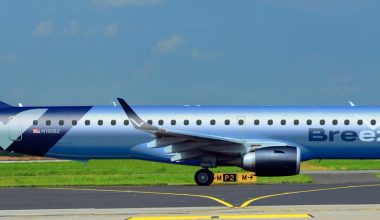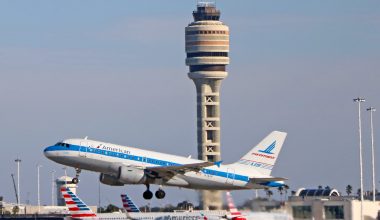Earlier in October 2022, Mexican President Andrés Manuel López Obrador expressed his interest in creating a military-run national airline. He stated that the government was working to establish a state-owned carrier under the control of the Mexican Army. The new carrier would be named ‘Mexicana’ in memory of the country’s former national carrier. Mexicana de Aviacion, one of the world’s oldest carriers, was the Mexican flagship airline that ceased operations in 2010. Charting the path forward, the President proposed giving the presidential Boeing 787 Dreamliner to the forthcoming Mexicana airline in November.
What’s the plan of the Mexican government regarding Mexicana Airlines? Where will be the base for this new carrier? This article contains everything we know about Mexico’s planned state-run “Mexicana Airlines.”
Creation of a new national airline
The Mexican government plans to set up a new national airline run by the armed forces. According to president Obrador, the administration is working towards solidifying the airline’s name as “Mexicana de Aviación.” The proposed state-owned carrier will bear the name of the now-defunct flag carrier of Mexico. The Mexico City headquartered La Compañía Mexicana de Aviación (or simply Mexicana) was the country’s oldest carrier, founded on 12 July 1921. After a legacy of nearly century-long operations, the carrier ended its operations on 28 August 2010.

Mexican Army to run Mexicana airline
The government intends to set up the up-and-coming Mexicana Airlines under the auspices of Olmeca-Maya-Mexica, the military-led business. Olmeca-Maya-Mexica is the state-owned company of the Mexican government that manages various civil infrastructures in Mexico. It was founded in April 2022 to run a handful of airports in Mexico, including the newly-built Felipe Angeles Airport. This military-run business is also responsible for operating and controlling the highly-anticipated ‘Mayan Train’ project.
The future Mexicana airline will operate commercial flights under the Ministry of National Defence (SEDENA). This will strengthen the Mexican Army’s increasing economic role and serve as a bulwark against corruption. The planned Mexicana Airlines will pick up the role of a much-needed operator in Felipe Angeles Airport and boost its air traffic. It will provide regional connectivity and offer flights to feed travelers into the ‘Tren Maya’ tourism project.
The base of the new Mexicana Airlines
The new Mexicana Airlines will base its operations on a newly-constructed Felipe Angeles Airport (NLU), Zumpango, State of Mexico. NLU Airport, the alternate air facility serving Mexico City, opened its door to the public on 21 March 2022. Mexico’s third-largest airport by territorial extension encompasses a terminal and three runways. Owned by SEDENA, the airport currently handles flight operations of carriers like Aeromexico, Arajet, Conviasa, Copa Airlines, Magnicharters, VivaAerobus, Volaris, etc. Despite serving a handful of airlines, it doesn’t have a strong player. It still awaits the expected rush of carriers willing to fully move their operations to the new hub.
Once Mexicana de Aviación comes into operation, it will be the viable operator for NLU Airport and uplift passenger traffic at its currently underused terminal.

Fleet of Mexicana de Aviación
In early November, president López Obrador proposed gifting the iconic presidential plane to Mexicana for special trips. He shared that the Boeing 787 Dreamliner would be used to ferry Mexicana’s best workers as a performance reward. The opulent wide-body jet will carry Mexicana’s top-tier workers and their families for trips worldwide. It will be rented to them for flights to Europe or another continent or from Mexico City to Tulum, Cancun, Los Cabos, etc.
The presidential B787 is a luxurious aircraft delivered in 2016 to ferry Mexico’s then-president Enrique Pena. When López Obrador took the presidential seat in 2018, he refused to use it and put the aircraft into storage. Despite attempts to sell the $130 million price-tagged aircraft, the government has failed. Although the government tried sending the VIP aircraft to Canadian president Justin Trudeau, the B787 never left home.
The 80-seater presidential plane has been sucking up resources and money at the hangar for the past few years. It can find a new lease of life at Mexicana Airlines’ fleet by operating special trips to reward its workers.
- Ten aircraft in the initial phase
The new Mexican de Aviación will operate ten aircraft in the initial phase, including the B787 Dreamliner. From its hub at NLU Airport, the planned military-operated carrier will offer regular commercial services to underserved destinations. The Mexican President asserts that some places currently do not have good air connectivity. So, creating a new home-based carrier will allow more flights and help reduce airfare.
With the disappearance of Interjet and capacity cuts by Aeromar, many Mexican regions have suffered a lack of air connectivity. The low-cost carrier Interjet was the third-largest Mexican airline until it took the worst hit of the coronavirus pandemic. The COVID-19 crisis was the last straw that eventually cut Interjet’s wings and folded its operations. Unable to withstand the financial pressure, the carrier filed for bankruptcy and suspended its operations effectively in December 2020.
Also Read: FAA prohibited Mexican carriers from adding flights to the United States
Another Mexican airline Aeromar is also facing strikingly similar issues as Interjet and heading toward bankruptcy. The carrier has a robust presence in regional routes and offers around 289 weekly flights. The shutdown of Aeromar will create a void in air service, requiring a new carrier to fill the gap. Mexicana Airlines will play an instrumental role in restoring connectivity and growing air services in the country.
The type of aircraft deployed in the Mexicana fleet is yet to be finalized. The state administration is conducting economic viability analysis for the new state-owned carrier’s aircraft types.
Naming the new airline after former flag carrier: Why?
The reason behind naming the carrier after the former Mexican flag carrier is simple: the highly-regarded brand of Mexicana. Although the defunct flagship airline no longer graces the world skies, it is still alive among aviation enthusiasts. Mexicana airline is one of the country’s most recognized aviation symbols and still holds a strong status in the aviation landscape. The acquisition of the Mexicana de Aviación brand will represent the return of a ‘symbol and an emblem’ to Mexico.

When will Mexicana Airlines come into operation?
Until now, the planned military-run Mexicana airline has only taken shape in a government statement. According to the President, the government is still working on the economics and feasibility of the new airline. He added that the airline would likely be ready for operation in 2023 with ten lease jets.
However, here is the catch; the law restricts an airport operator from running the airline. The Army, which runs the Felipe Angeles Airport and other facilities, is legally unqualified to own Mexicana Airlines. To make the future airline a reality, Mexico must modify the law to allow running the airline and airports simultaneously. Besides, the military-run airline business will have difficulty choosing the route and aircraft and making profits.
Criticism by previous administrations
Government critics have condemned President Lopez’s decision to hand over the management of Mexico’s infrastructure to the armed forces. The Mexican Army retains control of a handful of airports. It is currently constructing a new airport at Tulum alongside a facility linking beach resorts and archeological places around the Yucatan Peninsula. Furthermore, the Mexican Army is also set to run the multi-billion dollar project ‘Mayan Train’ and the airport in Chetumal.
The defunct Mexicana de Aviación
Mexicana de Aviación was Mexico’s longest-standing airline before it ceased operations over a decade ago in 2010. With 89 years of service, it is a widely known symbol among flying publics throughout the country. Established on 12 July 1921, the carrier started its operations a month later and gradually expanded its domestic and international services. It was the country’s biggest carrier with six subsidiaries, including Aerocaribe, AeroCozumel, Aeromonterrey, Mexicana Cargo, MexicanaClick, and MexicanLink.
With hubs in Cancun, Guadalajara, and Mexico City, the carrier flew to an extensive network of domestic and international destinations. In addition to regional services within the country, it served cities in South America, Europe, and North America. In South America, it operated flights to cities of Argentina, Brazil, Columbia, Chile, and Peru.
Similarly, it offered long-haul services to the European cities of Spain (Madrid) and the United Kingdom (London). Its route network in Canada included airports in Calgary, Edmonton, Hamilton, Montreal, Toronto, and Vancouver. Likewise, it served US cities of Bakersfield, Brownsville, Chicago, Dallas, Denver, Fresno, Las Vegas, Los Angeles, Miami, Oakland, Orlando, Portland, San Francisco, Washington DC, etc.
- Fleet of former Mexicana de Aviación
During its suspension, the former Mexicana de Aviación was a proud operator of 69 aircraft. Throughout its 89-year history, it operated various aircraft, including Airbus A319-100, A320-200s, A330-200s, Boeing 727-700s, B727-200s, Boeing 767-300ERs, Cessna T-50, Douglas C-47 Skytrain, CRJ200ERs, etc.






